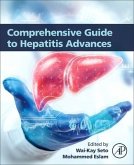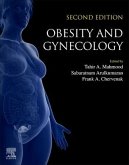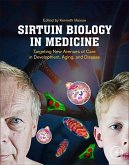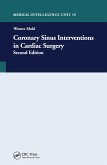The Vasculome
From Many, One
Herausgeber: Galis, Zorina S
The Vasculome
From Many, One
Herausgeber: Galis, Zorina S
- Broschiertes Buch
- Merkliste
- Auf die Merkliste
- Bewerten Bewerten
- Teilen
- Produkt teilen
- Produkterinnerung
- Produkterinnerung
The Vasculome: From Many, One introduces the fundamental bases of the "unity in diversity? of the Vasculome, from the coming together of various cell lineages during development, to its deceptively simple solution for architectural design: the efficient interplay of a few types of building blocks supporting key similar functions throughout the body and their highly specialized functional local variations. Specific examples are included to illustrate how the Vasculome is integral to the function and malfunction of different organs, such as the brain or the kidney. Each section is preceded by an…mehr
Andere Kunden interessierten sich auch für
![Basic Science for the Clinical Electrophysiologist, an Issue of Cardiac Electrophysiology Clinics Basic Science for the Clinical Electrophysiologist, an Issue of Cardiac Electrophysiology Clinics]() Charles AntzelevitchBasic Science for the Clinical Electrophysiologist, an Issue of Cardiac Electrophysiology Clinics89,99 €
Charles AntzelevitchBasic Science for the Clinical Electrophysiologist, an Issue of Cardiac Electrophysiology Clinics89,99 €![Comprehensive Guide to Hepatitis Advances Comprehensive Guide to Hepatitis Advances]() Comprehensive Guide to Hepatitis Advances191,99 €
Comprehensive Guide to Hepatitis Advances191,99 €![Obesity and Obstetrics Obesity and Obstetrics]() Obesity and Obstetrics218,99 €
Obesity and Obstetrics218,99 €![Obesity and Gynecology Obesity and Gynecology]() Obesity and Gynecology218,99 €
Obesity and Gynecology218,99 €![Sirtuin Biology in Medicine Sirtuin Biology in Medicine]() Sirtuin Biology in Medicine181,99 €
Sirtuin Biology in Medicine181,99 €![Micro-Organisms With Special Reference to the Etiology of the Infective Diseases Micro-Organisms With Special Reference to the Etiology of the Infective Diseases]() Carl FlüggeMicro-Organisms With Special Reference to the Etiology of the Infective Diseases39,99 €
Carl FlüggeMicro-Organisms With Special Reference to the Etiology of the Infective Diseases39,99 €![Coronary Sinus Intervention in Cardiac Surgery Coronary Sinus Intervention in Cardiac Surgery]() Werner MohlCoronary Sinus Intervention in Cardiac Surgery90,99 €
Werner MohlCoronary Sinus Intervention in Cardiac Surgery90,99 €-
-
-
The Vasculome: From Many, One introduces the fundamental bases of the "unity in diversity? of the Vasculome, from the coming together of various cell lineages during development, to its deceptively simple solution for architectural design: the efficient interplay of a few types of building blocks supporting key similar functions throughout the body and their highly specialized functional local variations. Specific examples are included to illustrate how the Vasculome is integral to the function and malfunction of different organs, such as the brain or the kidney. Each section is preceded by an introductory summary that will give a high level unified view of the key concepts illustrated in the various chapters in that section. Zorina Galis' The Vasculome was named a finalist in the Clinical Medicine category of the American Association of Publishers' 2023 PROSE Awards.
Hinweis: Dieser Artikel kann nur an eine deutsche Lieferadresse ausgeliefert werden.
Hinweis: Dieser Artikel kann nur an eine deutsche Lieferadresse ausgeliefert werden.
Produktdetails
- Produktdetails
- Verlag: Elsevier Science
- Seitenzahl: 526
- Erscheinungstermin: 14. Juni 2022
- Englisch
- Gewicht: 1400g
- ISBN-13: 9780128225462
- ISBN-10: 0128225467
- Artikelnr.: 62919602
- Herstellerkennzeichnung
- Libri GmbH
- Europaallee 1
- 36244 Bad Hersfeld
- 06621 890
- Verlag: Elsevier Science
- Seitenzahl: 526
- Erscheinungstermin: 14. Juni 2022
- Englisch
- Gewicht: 1400g
- ISBN-13: 9780128225462
- ISBN-10: 0128225467
- Artikelnr.: 62919602
- Herstellerkennzeichnung
- Libri GmbH
- Europaallee 1
- 36244 Bad Hersfeld
- 06621 890
PART I. THE ARCHITECTURAL DESIGN OF THE VASCULOME: BASIS FOR SYSTEM-WIDE
FUNCTIONAL UNITY AND LOCAL DIVERSITY SECTION 1. The Endothelium: Key
Unifying Principle of the Vasculome. Basis for Systemic Unity and for
Engineering of Local Specialization 1. Developmental of, and
environmental impact on, endothelial cell diversity 2. Endothelial cell
heterogeneity in health and disease - new insights from single cell studies
SECTION 2. Vasculome's Key Building Blocks - Beyond the Endothelium 3. The
Remarkable Diversity of Vascular Smooth Muscle in Development and Disease:
A paradigm for mesenchymal cell types 4. SMC contractile diversity 5.
Resident vascular immune cells in health and atherosclerotic disease 6.
Perivascular adipose tissue (physiology, pathology) 7. Major vascular ECM
components, differential distribution supporting structure and functions of
the Vasculome
SECTION 3. Putting it all Together: Integration across Body Scales and
within Tissues 8. Out to the Tissues: The Arterial Side (Arteries,
Arterioles - Development, Structure, Functions, Pathologies) 9. Capillary
diversity: endothelial cell specializations to meet tissue metabolic needs
10. The neurovascular unit and blood-CNS barriers in health and disease 11.
Lymphatic biology and medicine
PART II. INVESTIGATING THE VASCULOME: CONTEXT-DRIVEN METHODS, USES AND
LIMITATIONS SECTION 1. Experimental and Computational Studies of the
Vasculome 12. The Flow-dependent Endotheliome: Hemodynamic Forces, Genetic
Programs, and Functional Phenotypes 13. Intravital photoacoustic microscopy
of microvascular function and oxygen metabolism' 14. Systems biology
modeling of endothelial cell and macrophage signaling in angiogenesis in
human diseases 15. Simulation of blood flow and oxygen transport in
vascular networks 16. Clinical Investigations of vascular function
SECTION 2. Realizing the Promise of New High Content Technologies 17.
Angiodiversity - A tale retold by comparative transcriptomics 18. Using
Pattern Recognition and Discriminant Analysis of Functional Perfusion Data
to Create "Angioprints? for Normal and Perturbed Angiogenic Microvascular
Networks 19. Artificial Intelligence (AI) for the Vasculome
PART III. VASCULOME DYNAMICS: IN HEALTH AND IN SICKNESS SECTION 1.
Cooperating during Development and Organogenesis to Create Vasculome
Diversity 20. Vascular Development and Organogenesis: Depots of Diversity
among Conduits of Connectivity Define the Vasculome 21. Normal Vascular
Identity (arteries, veins, lymphatics) and malformations 22. Sprouting
Angiogenesis in Vascular and Lymphatic development
SECTION 2. Physiological and Pathological Remodeling of the Vasculome 23.
Enablers and drivers of vascular remodeling 24. Extracellular Matrix
Dynamics and Contribution to Vascular Pathologies 25. Lymphatic vasculature
anomalies and dysfunction
PART IV. THE VASCULOME AS PERPETRATOR AND VICTIM IN LOCAL AND SYSTEMIC
DISEASES 26. Endothelial dysfunction: basis for many local and systemic
conditions 27. The vascular phenotype in hypertension 28. Functional roles
of lymphatics in health and disease 29. Extracellular Matrix Genetics of
Thoracic and Abdominal Aortic Diseases 30. Peripheral arterial disease
(pathophysiology, presentation, prevention/management) 31. Venous Diseases
Including Thromboembolic Phenomena
PART V. THE VASCULOME IN DIAGNOSIS, PREVENTION, AND TREATMENT OF OTHER
DISEASES 32. Targeting vascular zip codes: from combinatorial selection to
drug prototypes 33. Angiosome concept for vascular interventions 34. RNA
therapies for cardiovascular disease 35. The Brain Vasculome: An
Integrative Model for CNS Function and Disease
PART VI. Looking Forward Toward "Precision Health" for the Vasculome 36.
Defining and Optimizing Vascular health 37. The Vasculome provides a
Body-wide Cellular Positioning System and Functional Barometer. The
"Vasculature as Common Coordinate Frame (CCF)? Concept
FUNCTIONAL UNITY AND LOCAL DIVERSITY SECTION 1. The Endothelium: Key
Unifying Principle of the Vasculome. Basis for Systemic Unity and for
Engineering of Local Specialization 1. Developmental of, and
environmental impact on, endothelial cell diversity 2. Endothelial cell
heterogeneity in health and disease - new insights from single cell studies
SECTION 2. Vasculome's Key Building Blocks - Beyond the Endothelium 3. The
Remarkable Diversity of Vascular Smooth Muscle in Development and Disease:
A paradigm for mesenchymal cell types 4. SMC contractile diversity 5.
Resident vascular immune cells in health and atherosclerotic disease 6.
Perivascular adipose tissue (physiology, pathology) 7. Major vascular ECM
components, differential distribution supporting structure and functions of
the Vasculome
SECTION 3. Putting it all Together: Integration across Body Scales and
within Tissues 8. Out to the Tissues: The Arterial Side (Arteries,
Arterioles - Development, Structure, Functions, Pathologies) 9. Capillary
diversity: endothelial cell specializations to meet tissue metabolic needs
10. The neurovascular unit and blood-CNS barriers in health and disease 11.
Lymphatic biology and medicine
PART II. INVESTIGATING THE VASCULOME: CONTEXT-DRIVEN METHODS, USES AND
LIMITATIONS SECTION 1. Experimental and Computational Studies of the
Vasculome 12. The Flow-dependent Endotheliome: Hemodynamic Forces, Genetic
Programs, and Functional Phenotypes 13. Intravital photoacoustic microscopy
of microvascular function and oxygen metabolism' 14. Systems biology
modeling of endothelial cell and macrophage signaling in angiogenesis in
human diseases 15. Simulation of blood flow and oxygen transport in
vascular networks 16. Clinical Investigations of vascular function
SECTION 2. Realizing the Promise of New High Content Technologies 17.
Angiodiversity - A tale retold by comparative transcriptomics 18. Using
Pattern Recognition and Discriminant Analysis of Functional Perfusion Data
to Create "Angioprints? for Normal and Perturbed Angiogenic Microvascular
Networks 19. Artificial Intelligence (AI) for the Vasculome
PART III. VASCULOME DYNAMICS: IN HEALTH AND IN SICKNESS SECTION 1.
Cooperating during Development and Organogenesis to Create Vasculome
Diversity 20. Vascular Development and Organogenesis: Depots of Diversity
among Conduits of Connectivity Define the Vasculome 21. Normal Vascular
Identity (arteries, veins, lymphatics) and malformations 22. Sprouting
Angiogenesis in Vascular and Lymphatic development
SECTION 2. Physiological and Pathological Remodeling of the Vasculome 23.
Enablers and drivers of vascular remodeling 24. Extracellular Matrix
Dynamics and Contribution to Vascular Pathologies 25. Lymphatic vasculature
anomalies and dysfunction
PART IV. THE VASCULOME AS PERPETRATOR AND VICTIM IN LOCAL AND SYSTEMIC
DISEASES 26. Endothelial dysfunction: basis for many local and systemic
conditions 27. The vascular phenotype in hypertension 28. Functional roles
of lymphatics in health and disease 29. Extracellular Matrix Genetics of
Thoracic and Abdominal Aortic Diseases 30. Peripheral arterial disease
(pathophysiology, presentation, prevention/management) 31. Venous Diseases
Including Thromboembolic Phenomena
PART V. THE VASCULOME IN DIAGNOSIS, PREVENTION, AND TREATMENT OF OTHER
DISEASES 32. Targeting vascular zip codes: from combinatorial selection to
drug prototypes 33. Angiosome concept for vascular interventions 34. RNA
therapies for cardiovascular disease 35. The Brain Vasculome: An
Integrative Model for CNS Function and Disease
PART VI. Looking Forward Toward "Precision Health" for the Vasculome 36.
Defining and Optimizing Vascular health 37. The Vasculome provides a
Body-wide Cellular Positioning System and Functional Barometer. The
"Vasculature as Common Coordinate Frame (CCF)? Concept
PART I. THE ARCHITECTURAL DESIGN OF THE VASCULOME: BASIS FOR SYSTEM-WIDE
FUNCTIONAL UNITY AND LOCAL DIVERSITY SECTION 1. The Endothelium: Key
Unifying Principle of the Vasculome. Basis for Systemic Unity and for
Engineering of Local Specialization 1. Developmental of, and
environmental impact on, endothelial cell diversity 2. Endothelial cell
heterogeneity in health and disease - new insights from single cell studies
SECTION 2. Vasculome's Key Building Blocks - Beyond the Endothelium 3. The
Remarkable Diversity of Vascular Smooth Muscle in Development and Disease:
A paradigm for mesenchymal cell types 4. SMC contractile diversity 5.
Resident vascular immune cells in health and atherosclerotic disease 6.
Perivascular adipose tissue (physiology, pathology) 7. Major vascular ECM
components, differential distribution supporting structure and functions of
the Vasculome
SECTION 3. Putting it all Together: Integration across Body Scales and
within Tissues 8. Out to the Tissues: The Arterial Side (Arteries,
Arterioles - Development, Structure, Functions, Pathologies) 9. Capillary
diversity: endothelial cell specializations to meet tissue metabolic needs
10. The neurovascular unit and blood-CNS barriers in health and disease 11.
Lymphatic biology and medicine
PART II. INVESTIGATING THE VASCULOME: CONTEXT-DRIVEN METHODS, USES AND
LIMITATIONS SECTION 1. Experimental and Computational Studies of the
Vasculome 12. The Flow-dependent Endotheliome: Hemodynamic Forces, Genetic
Programs, and Functional Phenotypes 13. Intravital photoacoustic microscopy
of microvascular function and oxygen metabolism' 14. Systems biology
modeling of endothelial cell and macrophage signaling in angiogenesis in
human diseases 15. Simulation of blood flow and oxygen transport in
vascular networks 16. Clinical Investigations of vascular function
SECTION 2. Realizing the Promise of New High Content Technologies 17.
Angiodiversity - A tale retold by comparative transcriptomics 18. Using
Pattern Recognition and Discriminant Analysis of Functional Perfusion Data
to Create "Angioprints? for Normal and Perturbed Angiogenic Microvascular
Networks 19. Artificial Intelligence (AI) for the Vasculome
PART III. VASCULOME DYNAMICS: IN HEALTH AND IN SICKNESS SECTION 1.
Cooperating during Development and Organogenesis to Create Vasculome
Diversity 20. Vascular Development and Organogenesis: Depots of Diversity
among Conduits of Connectivity Define the Vasculome 21. Normal Vascular
Identity (arteries, veins, lymphatics) and malformations 22. Sprouting
Angiogenesis in Vascular and Lymphatic development
SECTION 2. Physiological and Pathological Remodeling of the Vasculome 23.
Enablers and drivers of vascular remodeling 24. Extracellular Matrix
Dynamics and Contribution to Vascular Pathologies 25. Lymphatic vasculature
anomalies and dysfunction
PART IV. THE VASCULOME AS PERPETRATOR AND VICTIM IN LOCAL AND SYSTEMIC
DISEASES 26. Endothelial dysfunction: basis for many local and systemic
conditions 27. The vascular phenotype in hypertension 28. Functional roles
of lymphatics in health and disease 29. Extracellular Matrix Genetics of
Thoracic and Abdominal Aortic Diseases 30. Peripheral arterial disease
(pathophysiology, presentation, prevention/management) 31. Venous Diseases
Including Thromboembolic Phenomena
PART V. THE VASCULOME IN DIAGNOSIS, PREVENTION, AND TREATMENT OF OTHER
DISEASES 32. Targeting vascular zip codes: from combinatorial selection to
drug prototypes 33. Angiosome concept for vascular interventions 34. RNA
therapies for cardiovascular disease 35. The Brain Vasculome: An
Integrative Model for CNS Function and Disease
PART VI. Looking Forward Toward "Precision Health" for the Vasculome 36.
Defining and Optimizing Vascular health 37. The Vasculome provides a
Body-wide Cellular Positioning System and Functional Barometer. The
"Vasculature as Common Coordinate Frame (CCF)? Concept
FUNCTIONAL UNITY AND LOCAL DIVERSITY SECTION 1. The Endothelium: Key
Unifying Principle of the Vasculome. Basis for Systemic Unity and for
Engineering of Local Specialization 1. Developmental of, and
environmental impact on, endothelial cell diversity 2. Endothelial cell
heterogeneity in health and disease - new insights from single cell studies
SECTION 2. Vasculome's Key Building Blocks - Beyond the Endothelium 3. The
Remarkable Diversity of Vascular Smooth Muscle in Development and Disease:
A paradigm for mesenchymal cell types 4. SMC contractile diversity 5.
Resident vascular immune cells in health and atherosclerotic disease 6.
Perivascular adipose tissue (physiology, pathology) 7. Major vascular ECM
components, differential distribution supporting structure and functions of
the Vasculome
SECTION 3. Putting it all Together: Integration across Body Scales and
within Tissues 8. Out to the Tissues: The Arterial Side (Arteries,
Arterioles - Development, Structure, Functions, Pathologies) 9. Capillary
diversity: endothelial cell specializations to meet tissue metabolic needs
10. The neurovascular unit and blood-CNS barriers in health and disease 11.
Lymphatic biology and medicine
PART II. INVESTIGATING THE VASCULOME: CONTEXT-DRIVEN METHODS, USES AND
LIMITATIONS SECTION 1. Experimental and Computational Studies of the
Vasculome 12. The Flow-dependent Endotheliome: Hemodynamic Forces, Genetic
Programs, and Functional Phenotypes 13. Intravital photoacoustic microscopy
of microvascular function and oxygen metabolism' 14. Systems biology
modeling of endothelial cell and macrophage signaling in angiogenesis in
human diseases 15. Simulation of blood flow and oxygen transport in
vascular networks 16. Clinical Investigations of vascular function
SECTION 2. Realizing the Promise of New High Content Technologies 17.
Angiodiversity - A tale retold by comparative transcriptomics 18. Using
Pattern Recognition and Discriminant Analysis of Functional Perfusion Data
to Create "Angioprints? for Normal and Perturbed Angiogenic Microvascular
Networks 19. Artificial Intelligence (AI) for the Vasculome
PART III. VASCULOME DYNAMICS: IN HEALTH AND IN SICKNESS SECTION 1.
Cooperating during Development and Organogenesis to Create Vasculome
Diversity 20. Vascular Development and Organogenesis: Depots of Diversity
among Conduits of Connectivity Define the Vasculome 21. Normal Vascular
Identity (arteries, veins, lymphatics) and malformations 22. Sprouting
Angiogenesis in Vascular and Lymphatic development
SECTION 2. Physiological and Pathological Remodeling of the Vasculome 23.
Enablers and drivers of vascular remodeling 24. Extracellular Matrix
Dynamics and Contribution to Vascular Pathologies 25. Lymphatic vasculature
anomalies and dysfunction
PART IV. THE VASCULOME AS PERPETRATOR AND VICTIM IN LOCAL AND SYSTEMIC
DISEASES 26. Endothelial dysfunction: basis for many local and systemic
conditions 27. The vascular phenotype in hypertension 28. Functional roles
of lymphatics in health and disease 29. Extracellular Matrix Genetics of
Thoracic and Abdominal Aortic Diseases 30. Peripheral arterial disease
(pathophysiology, presentation, prevention/management) 31. Venous Diseases
Including Thromboembolic Phenomena
PART V. THE VASCULOME IN DIAGNOSIS, PREVENTION, AND TREATMENT OF OTHER
DISEASES 32. Targeting vascular zip codes: from combinatorial selection to
drug prototypes 33. Angiosome concept for vascular interventions 34. RNA
therapies for cardiovascular disease 35. The Brain Vasculome: An
Integrative Model for CNS Function and Disease
PART VI. Looking Forward Toward "Precision Health" for the Vasculome 36.
Defining and Optimizing Vascular health 37. The Vasculome provides a
Body-wide Cellular Positioning System and Functional Barometer. The
"Vasculature as Common Coordinate Frame (CCF)? Concept








